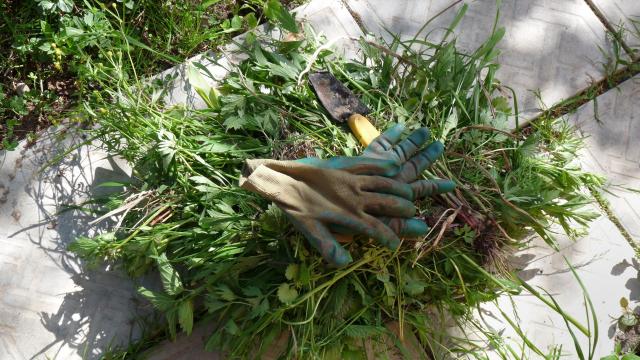Pulling weeds growing in your garden, yard, flower beds, or between the cracks in your driveway is tedious work — especially when they seem to grow back overnight.
But rather than blaming and then evicting the weeds that supposedly “don’t belong” in our perfectly pruned yards, we’re better off leaving them alone, and learning from them, according to Alys Fowler, a British horticulturist.
In an article she wrote for The Guardian, Fowler explains how weeds provide us with crucial information about our gardens and soil, and how to understand what they’re telling us. Here’s what to know.
What weeds tell you about your soil
Rather than seeing them as a nuisance, Fowler encourages us to appreciate weeds. Not only do they offer clues about the characteristics and deficiencies of our soil, but they also “act as a lifejacket to the soil,” shielding it from harsh sunlight, wind, and rain, she notes.
So what, exactly, are our weeds telling us? Here are some translations of their messages, courtesy of Fowler:
- Dandelions: The soil is slightly compact and lacks surface nutrients — especially calcium and potassium
- Nettles: There is too much surface nitrogen in the soil
- Bittercress, chickweed, and mouse weeds: The soil is full of bacteria
- Thistles, docks, green alkanets, and comfrey: The surface of the soil lacks nutrients; in order for plants to thrive in this soil, they must have long tap roots to reach the sub-soil nutrients
- Brambles: There is a lot of nitrogen in the soil; the land has mostly been left alone
- Fungi: The soil is carbon-rich
If you find any of these weeds in your garden or the rest of your yard, the more of a particular type you see, the bigger the soil issue they convey is, Fowler explains.
Once you know what your weeds are telling you, you can then make the necessary adjustments to the soil to accommodate the plants you’d like to grow. Alternatively, you can opt to grow plants that thrive in those particular soil conditions.
In addition to listening to weeds, Fowler also discusses other aspects of “laid-back gardening” that are worth exploring, including embracing rot, ditching your spade, and being patient with plant growth, rather than fertilizing excessively.

Leave a Reply
You must be logged in to post a comment.